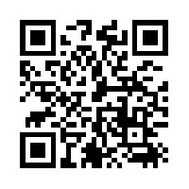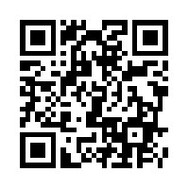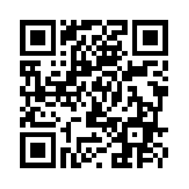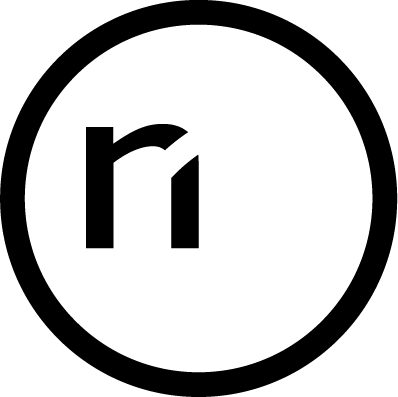Good advice for breastfeeding and expressing breast milk
It can be a difficult situation when your baby is transferred to the Neonatal Department. That first contact with your baby and the start of breastfeeding did not turn out at all as you expected.
In the first period after birth, a lot of information will be given about the nutrition of your little one. We know from experience that it can be difficult to remember and keep track of everything. Therefore, this booklet is intended as a support for the many words of the nursing staff.
-
It can be a difficult situation when your baby is transferred to the Neonatal Department. That first contact with your baby and the start of breastfeeding did not turn out at all as you expected.
In the first period after birth, a lot of information will be given about the nutrition of your little one. We know from experience that it can be difficult to remember and keep track of everything. Therefore, this booklet is intended as a support for the many words of the nursing staff.
-
Breast milk is not just nutrition but contains, among other things, growth factors and antibodies which can protect your baby from infections.
When you've given birth prematurely, your milk will adapt to your baby's very special nutritional needs. The baby will get milk from you as soon as possible.
Bring the first yellow colostrum to the baby – even if it's only a few ml. The first drops in the mouth and stomach:
- protects against infections
- stimulates digestion
- comforts and does the baby good.
Mother's milk is the best for the baby.
-
Sit comfortably with your baby
When your baby is to be put to the breast for the first time, it is important that you are sitting comfortably. Sit in a chair with a straight back and place a duvet or a slightly large blanket in your lap so that the baby is level with the nipple.
Your baby should lie with its stomach against yours. If the baby sucks weakly, it can be good to have the baby's lower body under your arm. That way, you have 2 hands free to help the baby, as well as keeping the baby warm under your arm.
Bring the baby in closely
Stimulate the baby's lips with the nipple and squeeze out a few drops of milk to make the baby yawn. When the baby has its tongue down and yawns widely, you can bring them to the breast. The neck should be slightly bent backwards, and the chin should be in good contact with the chest. The baby should have a mouth full of breast, and the lips should be curled over the breast. If the baby only sucks on the outer part of the nipple, not only do they do not get enough milk, but pain and sores can form on the nipple.
It is possible that the baby will not succeed in latching on to the breast and sucking the first few times they are laid til. For some babies, it may take days or weeks before they know the breast or have the strength and maturity for the task.
Here you can watch a video about breastfeeding the newborn baby:
https://aalborguh.RN.dk/amning-gode-råd
You can also access the video by scanning the QR code with the camera in your phone.

Other breastfeeding positions
If the described breastfeeding position does not work for you or your baby, you can try other breastfeeding positions together with the staff, such as the twin or rugby ball hold position or laid-back breastfeeding.
Here you can see different breastfeeding positions:
https://aalborguh.RN.dk/ammestillinger
You can also access the video by scanning the QR code with the camera in your phone.

-
When the baby sucks at your breast, the so-called let-down reflex is stimulated. The let-down reflex causes the milk to flow from the mammary glands to the nipple. This reflex may fail if you are tense or nervous for example. Therefore, trust yourself and trust that you can breastfeed so that you can relax.
Let the baby empty the breast
The composition of your milk changes during a feed. The first milk is thin and bluish and should quench the baby 's thirst. The last milk has a higher fat content and is supposed to feed the baby. Therefore, it is important that when the milk starts to flow, you let the baby stay with the same breast for as long as it wants, so that they have the opportunity to get the fatter milk as well. If the baby is hungrier, it can be offered a little of the other breast, it is then important for the next feed that the baby starts at the last breast.
When the baby sucks at your breast, the mammary glands are stimulated to produce milk. Therefore, the more often the baby sucks, the more milk you produce.
-
If the baby does not have a lot of strength, it can be good to get the milk to flow before the baby is laid til. The milk will then stimulate the baby and encourage them to suckle. (See more about stimulation/massage of the breast in the section on expressing.)
If the breast is hard, you can express with your hands until the brown area becomes soft. Then the baby can latch on to the breast more easily.
The sucking reflex can be stimulated while the baby is feeding by gently massaging the baby on their hand or under their foot.
The searching reflex is on the baby’s cheek. You should therefore avoid touching the cheek while the baby is breastfeeding, as the baby may become confused.
-
Breastfeeding the premature or sick newborn baby begins with early skin-to-skin contact. You cannot specify any weight or age limit for when the baby is ready for skin contact or to be laid til.
Together with the staff, you can go over the "Milky Way" – the phases your baby has to go through on the way to fully established breastfeeding. Your baby’s condition is decisive, as well as the extent to which the baby can relate to stimuli without reacting with stress.
Throughout the hospitalisation, we will continuously review plans for your baby's nutrition - together with you.
-
If the baby is in the process of establishing breastfeeding or is unable to suck, it can be tube fed via a thin tube that goes through the mouth or nose into the stomach. The caregiver will place the feeding tube, and you can participate in the feeding of the baby as desired and under the guidance of the staff.
It benefits the baby to lie with you during their feed, preferably skin-to-skin, and if possible, to suck on the breast or pacifier while milk is given through the tube. In this way, the baby learns to associate being fed with contact, closeness, satiety and sucking.
Use of pacifier
There is evidence that it is beneficial for the premature baby to suck while being tube fed. It stimulates digestion and at the same time contributes to the baby's security and mental balance.
Sucking at the mother's breast is the first priority, but when this is not possible, a pacifier can make an excellent substitute, preferably combined with a little milk in the baby's mouth. Mum's breast is also where the baby – in addition to food – finds comfort and peace. It may therefore be appropriate and necessary to use the pacifier as comfort when you cannot have your baby with you all the time.
Nipple Shield
Nipple shields are aids you can use if your baby has trouble latching onto the nipple when it is placed to the breast. The nipple shield is usually a temporary aid, so be aware that the baby will be training to suck without it.
Breastfeeding tube
Ideally, your baby feeds at your breast, but sometimes you need to give extra food before your milk has flowed. Here, a breastfeeding tube can be a useful option.
The use of a breastfeeding tube relies on your baby be able to suck and create a vacuum. A tube is inserted into the corner of the baby's mouth and is connected to a syringe with milk in it. When the baby sucks at the breast, a little of the milk is given in the syringe at the same time. The breast is stimulated here, but it is important that you continue to stimulate with a breast pump as well, to get a good milk production established.
Cup feeding
Cup feeding can be used for older babies who are awake and sucking and need a small supplement after breastfeeding. Feeding with a cup is only used either as a supplement to breastfeeding, or for individual whole meals – but is not to be used to provide full nutrition for several days.
Bottle
When the baby sucks on a bottle, it uses a special sucking technique, and the bottle teat provides a strong sucking stimulation that the baby can get used to. It is therefore a good idea to wait with bottle feeding until the baby has a good and sound sucking technique on the breast and takes the largest part of their amount from there.
When we do occasionally recommend a bottle, it is often because the baby is too sick and weak to breastfeed. The bottle covers the baby's need to suck, and less energy is used when taking a bottle, as the milk flows out more easily to the baby.
It is important that you agree with the nurse how your baby should be fed when the breast is not sufficient.
-
When assessing whether your baby is getting enough milk, you should pay attention to the following:
- That the baby is awake and alert.
- That the baby shows interest in and pleasure in eating.
- That the baby is predominantly comfortable – i.e. not constantly restless/crying, but also not lethargic either.
- That the baby urinates 6-8 daily - i.e. at least 6 wet/heavy nappies.
-
Alcohol and nicotine pass into breast milk and should therefore be avoided whilst breastfeeding. A single glass of wine or beer doesn't hurt, but you should avoid it as much as possible. If you can't quit smoking, it's best that you smoke immediately after breastfeeding or expressing milk.
Medication can also pass through into your milk and you should therefore consult the caregiver if you are taking medication.
-
The first and very effective stimulation of your breast can be done by hand – also called hand expression. Staff will be happy to assist and instruct.
When expressing by hand, you create excess pressure in the breast tissue (where the breast pump creates negative pressure). Hand expressing helps the colostrum to flow, which is extremely effective in "kickstarting" your milk production.
The physical stimulation of the breast tissue with massage and compression promotes the release of hormones such as oxytocin and prolactin, which are of great importance for breastfeeding in the long term.
See instructions on video for hand expression:
https://aalborguh.RN.dk/udmalkning
You can also access the video by scanning the QR code with the camera in your phone.

Transition to the breast pump
The hand expressing method can be used for the first 1-2 days, and if you still need to express milk, you can switch to a breast pump. On both the 12th and 13th floors of the Neonatal Unit, there is a breast pump with a special milking program (PREEMIE) that can initiate early milk production.
-
- Start as early as possible after giving birth by stimulating your breasts, preferably within the first 6 hours after birth.
- Wash your hands.
- Make it an enjoyable moment when you express milk. Make yourself comfortable, maybe with a picture of your baby, a magazine or a good book.
- It has been shown that it is a good idea to massage the breasts for 2 minutes before putting starting with the breast pump. The milk flows more easily and the amount of milk increases.
- There are different sizes of breast shields, and it is important that you find the size that fits your breast.
- Stimulate the breasts with expressing via the breast pump on both breasts at once for 5-10 minutes (see the instructions on the machine). This process of massage and expressing is repeated.
- It is recommended to express at least 6 times a day. There should be no more than 6 hours between expressing.
- If you have given birth prematurely, we recommend that you continue to express at least 2 times a day until the due date.
- The expressed milk is poured into a bottle. The bottle must then be identified with your baby’s labels upon which you must write the date and time the milk was expressed. You must also write the bottle number on the bottle before the caregiver puts it in the fridge.
- The breast pump set is disassembled and rinsed in cold water before being placed in the grey vats in the hallway.
- The breast pump is disinfected before it is put in place.
Storing expressed breast milk
- Freshly expressed breast milk can be stored for 72 hours in the refrigerator.
- If the milk is to be frozen, it must be within 24 hours.
- For frozen breast milk, the shelf life is 6 months.
- When the milk is taken out of the freezer, it should be used within 24 hours.
-
As a new mother, you usually expect to be able to breastfeed your baby. It is important to remember that even though the baby may not start breastfeeding immediately after birth, it will succeed for the most part.
It can be stressful to express milk, alongside the other initial difficulties that may exist in your baby's life. It may be that you are unable to maintain milk production or that the baby does not become familiar with the breast. However, you know that both you and your baby did what you could.
Keep in mind that being a good mother has nothing to do with whether the baby is breastfed or not.
-
If you have any questions, you are welcome to ask the staff or contact us.
Neonatal Units 12 and 13
Tel. 97 66 34 42
We are here 24/7.


